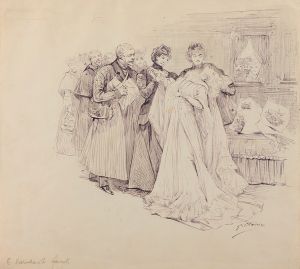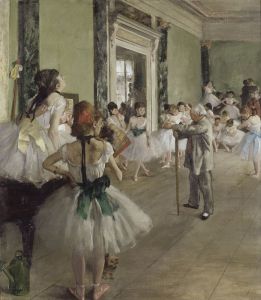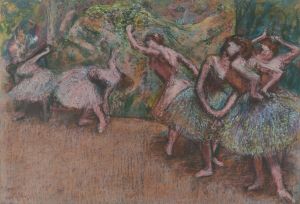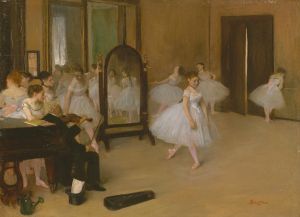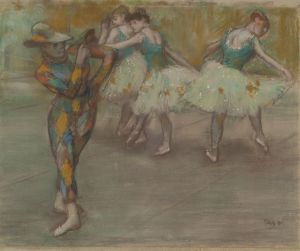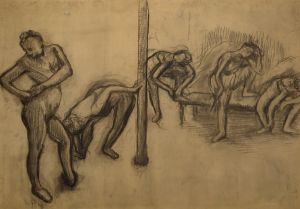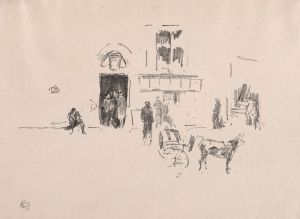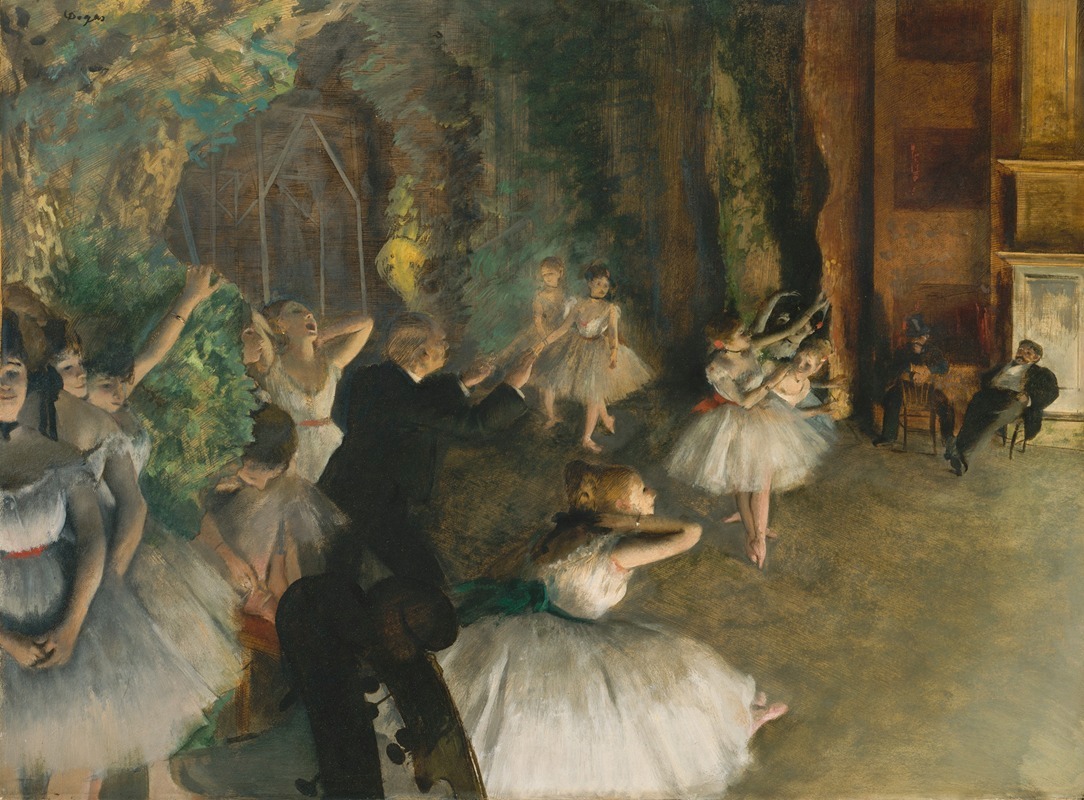
The Rehearsal of the Ballet Onstage
A hand-painted replica of Edgar Degas’s masterpiece The Rehearsal of the Ballet Onstage, meticulously crafted by professional artists to capture the true essence of the original. Each piece is created with museum-quality canvas and rare mineral pigments, carefully painted by experienced artists with delicate brushstrokes and rich, layered colors to perfectly recreate the texture of the original artwork. Unlike machine-printed reproductions, this hand-painted version brings the painting to life, infused with the artist’s emotions and skill in every stroke. Whether for personal collection or home decoration, it instantly elevates the artistic atmosphere of any space.
The Rehearsal of the Ballet Onstage is a painting by the French artist Edgar Degas, created around 1874. Degas is widely recognized as one of the leading figures of the Impressionist movement, although he preferred to describe himself as a realist or independent artist. This work is one of his many depictions of ballet dancers, a subject that became central to his artistic career.
The painting is executed in oil on canvas and measures approximately 54 x 73 centimeters. It is currently housed in the Musée d'Orsay in Paris, France. The scene captures a moment during a ballet rehearsal, with dancers practicing on stage under the watchful eye of a ballet master. Degas's composition emphasizes movement, posture, and the physicality of the dancers, reflecting his keen interest in the human form and the discipline of dance.
Degas was known for his innovative approach to composition, and this painting is no exception. The perspective is slightly elevated, giving the viewer a sense of looking down onto the stage. This angle, combined with the cropped edges of the scene, creates a dynamic and intimate view of the rehearsal. The dancers are arranged in various poses, some standing, others stretching or adjusting their positions, which adds to the sense of spontaneity and realism.
The artist's use of light and color is subtle yet effective. The stage is illuminated with soft, diffused light, which highlights the delicate textures of the dancers' tutus and the wooden floorboards. The muted palette, dominated by shades of white, gray, and earthy tones, enhances the focus on the figures and their movements rather than the setting.
Degas's fascination with ballet was partly influenced by his frequent visits to the Paris Opéra, where he observed rehearsals and performances. His works often depict behind-the-scenes moments, offering a glimpse into the rigorous training and discipline required of dancers. This focus on the labor and effort behind the art of ballet sets Degas's works apart from more idealized representations of dance.
The painting is also notable for its lack of a traditional narrative. Instead of telling a specific story, Degas captures a fleeting moment in time, emphasizing the ephemeral nature of movement and performance. This approach aligns with the broader goals of the Impressionist movement, which sought to depict modern life and its transient qualities.
The Rehearsal of the Ballet Onstage is a testament to Degas's mastery of technique and his deep understanding of his subject matter. It remains one of his most celebrated works and continues to be admired for its innovative composition and sensitive portrayal of the world of ballet.





